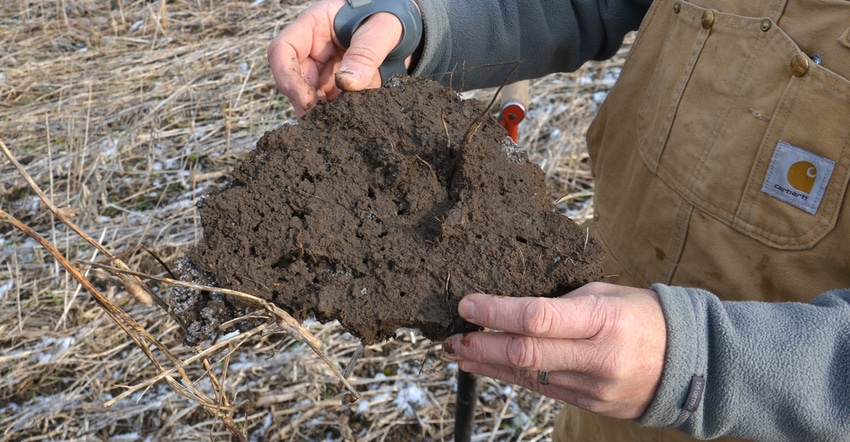April 1, 2020

The shovel has been around for a very long time. During the so-called Neolithic and early Bronze eras, people in Britain used shovels made of an ox’s shoulder blade. As early as 1100 B.C., the Chinese were using spades that closely resembled today’s shovel. Eskimos used the bones of whales and walruses as shovels to make igloos.
The shovel was historically used in agriculture. Despite increasing mechanization, the humble shovel should still hold a place of primary importance on your farm. One of its main jobs should be to evaluate soil health, and one big measure of soil health is the degree of soil compaction.
Soil compaction occurs when soil particles are pressed together, reducing the pore space between them. It is a response to pressure, defined as weight per unit area, exerted by field machinery. Soil compaction is typically found in the subsurface of soils, especially at the points where shanks and other steel implements have historically contacted the soil. It’s long been known as the “plow layer.” But it can also be found on the soil surface as crusting. You can see sidewall compaction of the seed slot during planting as well. The risk for soil compaction is greatest when soils are wet.
Symptoms of soil compaction include reduced water infiltration, standing water and drainage problems, increased runoff and erosion, and fewer roots deep in the soil profile. Soil compaction restricts rooting, which in turn reduces water and nutrient uptake by plants.
With fewer and smaller pores, the soil becomes waterlogged, which also decreases the soil temperature. Lower soil temperatures affect the biological activity of soil organisms and slow the decomposition rate of crop residue and soil organic matter.
Dig and look
How do you know if you have compaction? This is where your shovel comes in handy. Dig up a cubic foot — 12 inches wide by 12 inches long by 12 inches deep — of your soil. Get down on your hands and knees and really look at it. Look for roots that are stubby, restricted in depth, flattened or turned horizontally.
Also look for platy soil structure below the surface. Platy structure runs horizontally in the soil profile and breaks apart into plates when pressed together between your fingers. Probing the exposed soil profile with a knife blade every 2 inches can also show differences in penetration and soil structure.
Repeat the whole process with another cubic foot of soil in a fencerow or other nontrafficked area. That gives a representation of what a “natural” site feels like compared to in-field conditions.
Prevent soil compaction
How can soil compaction be minimized and alleviated? Avoid tillage, harvest and other field operations when the soil is wet. Reduce the number of trips across a field. Use less secondary tillage. Reduce the weight of field equipment. Maintain and increase soil organic matter.
Use cover crops, especially those with taproots, to penetrate compacted soil layers. Reduce the percentage of the field traveled with controlled traffic farming. Finally, remember to keep the all-important, humble shovel close by for more inspections to chart progress in reducing compacted layers.
Brown is a district conservationist with the Natural Resources Conservation Service. Bailey is the NRCS state conservation agronomist in Indiana. They write on behalf of the Indiana Conservation Partnership.
You May Also Like




